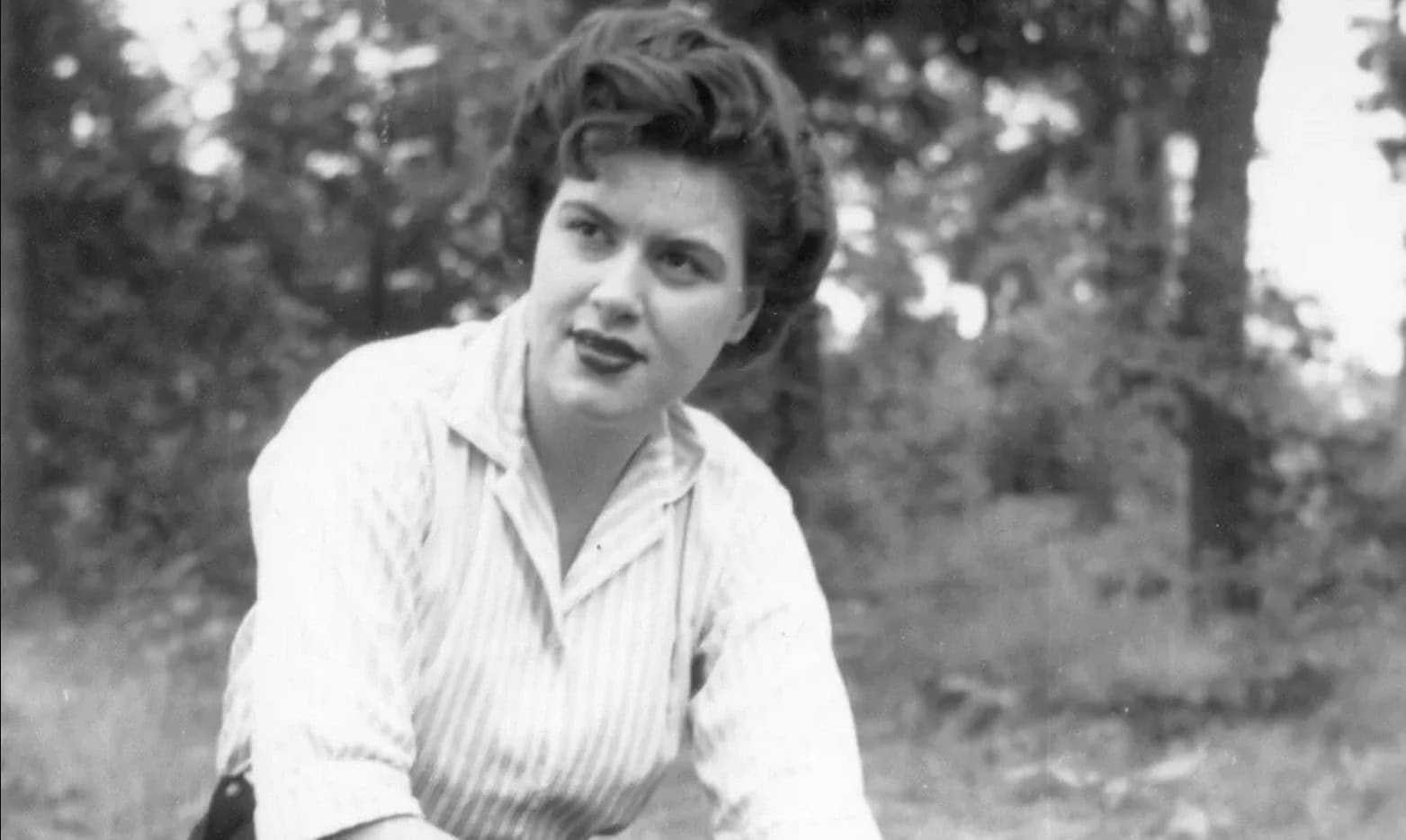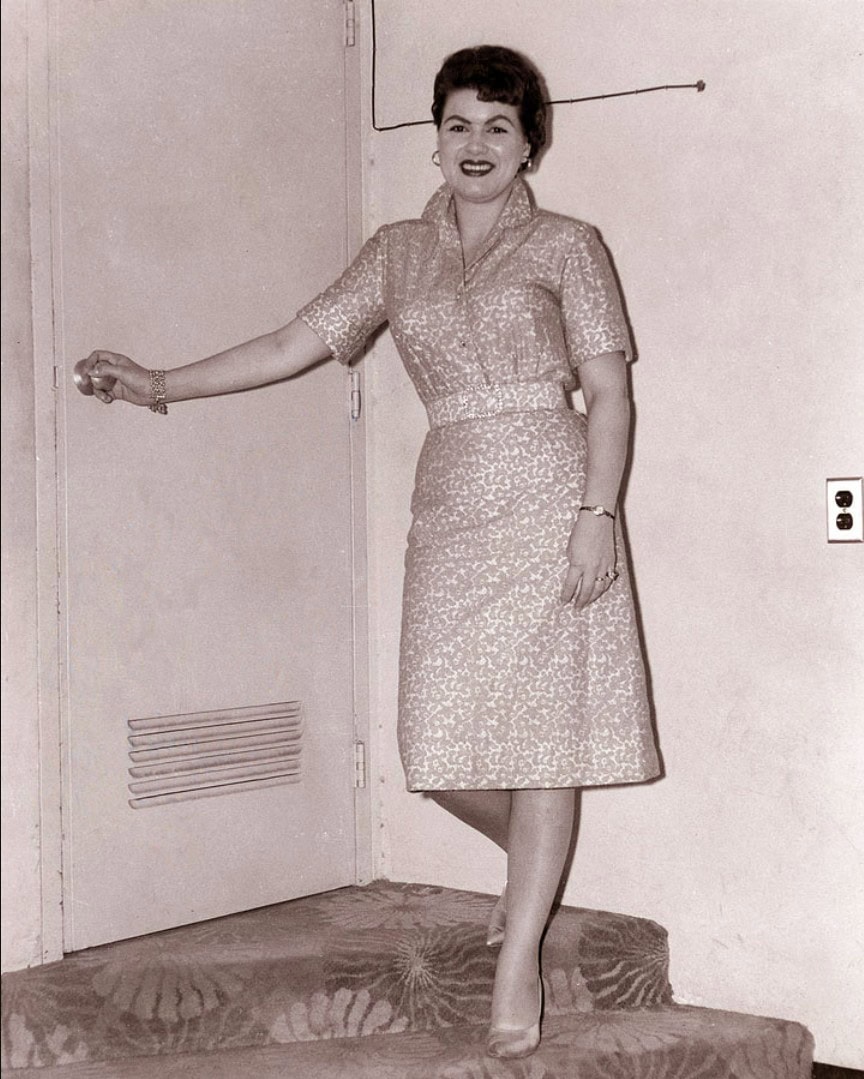
About the song
“Walkin’ After Midnight” is an enduring classic in the country music genre, written by Alan Block and Don Hecht and immortalized by the unparalleled Patsy Cline. This song, which blends elements of jazz, traditional pop, and blues, was initially penned in 1954 and found its way to Cline after an intriguing series of events. Originally intended for pop singer Kay Starr, the song was rejected by her label and remained unused until Hecht, while working for Four Star Records, rediscovered it. Recognizing Patsy Cline’s unique vocal talent, Hecht proposed the song for her, despite Cline’s initial reluctance.
The path to recording “Walkin’ After Midnight” was not straightforward. Cline’s first reaction to the song was negative, but a compromise was reached: she agreed to record it if she could also record “A Poor Man’s Roses (Or a Rich Man’s Gold),” a song she preferred. The recording session took place on November 8, 1956, at Bradley Film and Recording Studios, with Paul Cohen producing and Owen Bradley assisting. Alongside “Walkin’ After Midnight,” several other tracks were recorded, but it was this song that would become her breakout hit.
In January 1957, Cline performed “Walkin’ After Midnight” on the CBS television program “Arthur Godfrey’s Talent Scouts.” The performance was a significant turning point. The audience’s overwhelming response prompted Decca Records, which leased music from Four Star, to rush-release the single on February 11, 1957. The song quickly climbed the charts, peaking at No. 2 on the Billboard Hot Country Songs chart and reaching No. 12 on the Billboard Pop chart. This single version sold over one million copies, establishing Patsy Cline as a formidable talent in country music.
“Walkin’ After Midnight” is notable for its rich instrumentation, featuring contributions from The Nashville A-Team of musicians, including Harold Bradley, Grady Martin, Bob Moore, and Don Helms. These musicians provided a backdrop that complemented Cline’s distinctive voice, making the song a timeless piece that resonated with audiences. The song’s structure, recorded in the key of C major, follows the traditional AABA format, with a short instrumental solo and a repeat of sections B and A, making it both familiar and innovative.
In 2020, the 1957 release of “Walkin’ After Midnight” was inducted into the Grammy Hall of Fame, a testament to its lasting impact and significance. Over the years, Cline’s rendition has been celebrated and included in numerous lists of the greatest songs in country music history.
“Walkin’ After Midnight” stands as a testament to Patsy Cline’s extraordinary talent and the song’s ability to transcend its era, continuing to captivate listeners with its blend of emotional depth and musical sophistication. This song not only marked the beginning of Cline’s illustrious career but also secured her place in the annals of music history.

Video
Lyrics
I go out walkin’ after midnight
Out in the moonlight
Just like we used to do, I’m always walkin’
After midnight, searchin’ for you (wa-wa-walking, wa-wa-walking)
I walk for miles along the highway
Well, that’s just my way
Of sayin’ I love you, I’m always walkin’
After midnight, searchin’ for you (wa-wa-walking, wa-wa-walking)
I stop to see a weepin’ willow
Cryin’ on his pillow
Maybe he’s cryin’ for me
And as the skies turn gloomy
Night winds whisper to me
I’m lonesome as I can be
I go out walkin’ after midnight
Out in the moonlight
Just hopin’ you may be somewhere a-walkin’
After midnight, searchin’ for me (Wa-wa-walking, wa-wa-walking)
I stop to see a weepin’ willow
Cryin’ on his pillow
Maybe he’s cryin’ for me
And as the skies turn gloomy
Night winds whisper to me
I’m lonesome as I can be
I go out walkin’ after midnight
Out in the moonlight
Just hopin’ you may be somewhere a-walkin’
After midnight, searchin’ for me (wa-wa-walking, wa-ooh-ah)